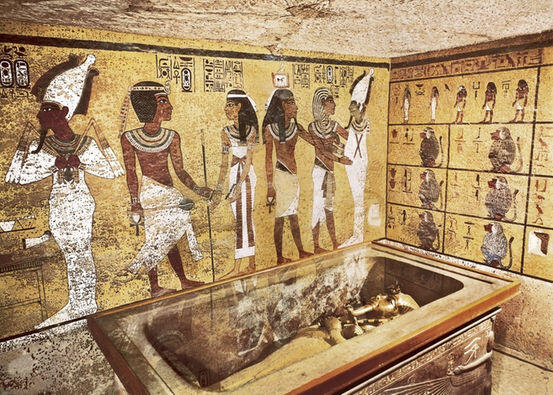Minister of Antiquities Khaled El-Enany is set to inaugurate on Saturday a number of archaeological sites, as well as the second round of the “Thebes in the first millennium BC” conference in Luxor.
The conference is organised by the South Asasif Conservation Project in conjunction with the Ministry of Antiquities and the Egypt Exploration Society.
Mahmoud Afifi, head of the ancient Egyptian department at the Ministry of Antiquities, said that the conference will feature presentations from 46 Egyptian and international scholars and has attracted close to 200 participants.
The main focus of the conference, he said, is current archaeological research on tombs and temples of the 25th-26th dynasties in the Theban area.
Papers on other Egyptian sites and monuments of the Kushite and Saite periods are also invited from all areas of research including archaeology, art history, history, chronology, religion, linguistics, and anthropology. The conference will also feature discussion panels to facilitate communication.
The conference will be accompanied by field trips to archaeological sites related to the period, including the Kushite and Saite tombs of the South Asasif necropolis, North Asasif Necropolis and Karnak temple.
On the fringe of the conference, Afifi said, the minister of antiquities is to inaugurate the Second Pillared Hall of the tomb of Karakhmun, a high-ranking official of the 25th dynasty, after its restoration.
The tomb of Karakhamun is the first fully reconstructed room in the ruined Kushite tomb re-discovered by the South Asasif Conservation Project, directed by Dr. Elena Pischikova, in 2006.
Pischikova said that the Egyptian-American mission is celebrating its tenth anniversary this year with important discoveries in the tombs of Karabasken, Karakhamun and Irtieru, as well as well as a massive amount of conservation and reconstruction work.
One of the main goals of the project is the conservation and reconstruction of ancient monuments in their original location and opening them to Egyptian and foreign visitors.
Pischikova said that the tomb of Karakhamun is the most important reconstruction task undertaken by the project. The tomb’s ceiling had collapsed and its rooms and remaining decoration were buried beneath large chunks of fallen bedrock.
As a result of intense clearing, the team discovered the entrance staircase, vestibule, two pillared halls, and the painted burial chamber of Karakhamun as well as around 35,000 fragments of the detached original decoration.
The Second Pillared Hall, Pischikova explained, was found in the worst condition, with crumbled walls and fallen decoration. Its reconstruction started in 2012.
In 2016 the antiquities ministry’s conservation team and epigraphers from the project were able to rebuild the two doorframes at the entrance to the hall, four pilasters, four pillars, all the walls, the false door, and the architrave.
The reconstructed decoration includes 24 chapters of the Book of the Dead, Pyramid Texts, 6 offering scenes, and a false door with a statue of Osiris.
The central higher aisle, topped by two architraves and cavetto, is a unique feature, recreating a temple space in an elite tomb.
“The beautiful carving of the ten images of Karakhamun creates an exclusive gallery of early Kushite images of a tomb owner,” Pischikova highlights adding that the number of known decorated elite tombs of the 25th dynasty is very limited and each of them has unique features.
The reconstruction of the tomb of Karakhamun, one of the first tombs of the Kushite renaissance, is an important contribution to historians’ understanding of Egypt in the first millennium BC and brings back to life a beautiful example of Egyptian art.
Source: Ahram Online











